Entry Database : PDB / ID : 6odlTitle Crystal structure of GluN2A agonist binding domain with 4-butyl-(S)-CCG-IV Glutamate receptor ionotropic, NMDA 2A,Glutamate receptor ionotropic, NMDA 2A Keywords / / / Function / homology Function Domain/homology Component
/ / / / / / / / / / / / / / / / / / / / / / / / / / / / / / / / / / / / / / / / / / / / / / / / / / / / / / / / / / / / / / / / / / / / / / / / / / / / / / / / / / / / / / / / / / / / / / / / / / / / / / / / / / / / / / / / / / / / / / / / / / / / / / / / / Biological species Rattus norvegicus (Norway rat)Method / / / Resolution : 2.3 Å Authors Mou, T.C. / Clausen, R.P. / Sprang, S.R. / Hansen, K.B. Funding support Organization Grant number Country National Institutes of Health/National Institute of General Medical Sciences (NIH/NIGMS) P20GM103546 National Institutes of Health/National Institute of Neurological Disorders and Stroke (NIH/NINDS) 1R01NS097536
Journal : Eur.J.Med.Chem. / Year : 2021Title : Stereoselective synthesis of novel 2'-(S)-CCG-IV analogues as potent NMDA receptor agonists.Authors : Maolanon, A. / Papangelis, A. / Kawiecki, D. / Mou, T.C. / Syrenne, J.T. / Yi, F. / Hansen, K.B. / Clausen, R.P. History Deposition Mar 26, 2019 Deposition site / Processing site Revision 1.0 Apr 1, 2020 Provider / Type Revision 1.1 Feb 24, 2021 Group / Category / citation_authorItem _citation.country / _citation.journal_abbrev ... _citation.country / _citation.journal_abbrev / _citation.journal_id_ASTM / _citation.journal_id_CSD / _citation.journal_id_ISSN / _citation.journal_volume / _citation.page_first / _citation.page_last / _citation.pdbx_database_id_DOI / _citation.pdbx_database_id_PubMed / _citation.title / _citation.year Revision 1.2 Oct 11, 2023 Group / Database references / Refinement descriptionCategory chem_comp_atom / chem_comp_bond ... chem_comp_atom / chem_comp_bond / database_2 / pdbx_initial_refinement_model Item / _database_2.pdbx_database_accessionRevision 1.3 Oct 30, 2024 Group / Category / pdbx_modification_feature
Show all Show less
 Yorodumi
Yorodumi Open data
Open data Basic information
Basic information Components
Components Keywords
Keywords Function and homology information
Function and homology information
 X-RAY DIFFRACTION /
X-RAY DIFFRACTION /  SYNCHROTRON /
SYNCHROTRON /  MOLECULAR REPLACEMENT / Resolution: 2.3 Å
MOLECULAR REPLACEMENT / Resolution: 2.3 Å  Authors
Authors United States, 2items
United States, 2items  Citation
Citation Journal: Eur.J.Med.Chem. / Year: 2021
Journal: Eur.J.Med.Chem. / Year: 2021 Structure visualization
Structure visualization Molmil
Molmil Jmol/JSmol
Jmol/JSmol Downloads & links
Downloads & links Download
Download 6odl.cif.gz
6odl.cif.gz PDBx/mmCIF format
PDBx/mmCIF format pdb6odl.ent.gz
pdb6odl.ent.gz PDB format
PDB format 6odl.json.gz
6odl.json.gz PDBx/mmJSON format
PDBx/mmJSON format Other downloads
Other downloads 6odl_validation.pdf.gz
6odl_validation.pdf.gz wwPDB validaton report
wwPDB validaton report 6odl_full_validation.pdf.gz
6odl_full_validation.pdf.gz 6odl_validation.xml.gz
6odl_validation.xml.gz 6odl_validation.cif.gz
6odl_validation.cif.gz https://data.pdbj.org/pub/pdb/validation_reports/od/6odl
https://data.pdbj.org/pub/pdb/validation_reports/od/6odl ftp://data.pdbj.org/pub/pdb/validation_reports/od/6odl
ftp://data.pdbj.org/pub/pdb/validation_reports/od/6odl
 Links
Links Assembly
Assembly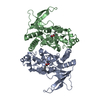
 Components
Components

 X-RAY DIFFRACTION / Number of used crystals: 1
X-RAY DIFFRACTION / Number of used crystals: 1  Sample preparation
Sample preparation SYNCHROTRON / Site:
SYNCHROTRON / Site:  APS
APS  / Beamline: 19-ID / Wavelength: 0.987 Å
/ Beamline: 19-ID / Wavelength: 0.987 Å Processing
Processing MOLECULAR REPLACEMENT
MOLECULAR REPLACEMENT Movie
Movie Controller
Controller


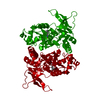
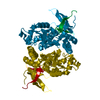



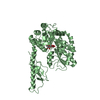

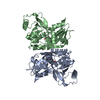
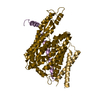

 PDBj
PDBj





